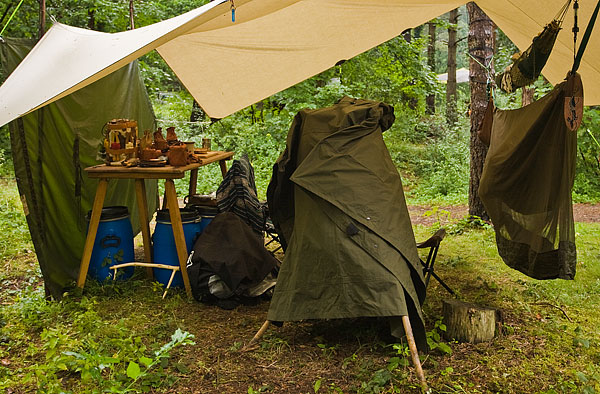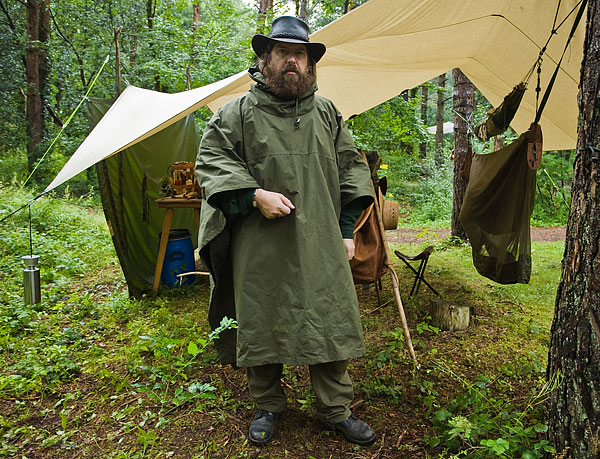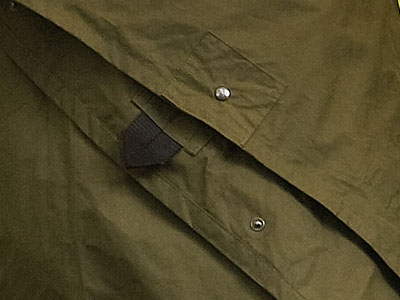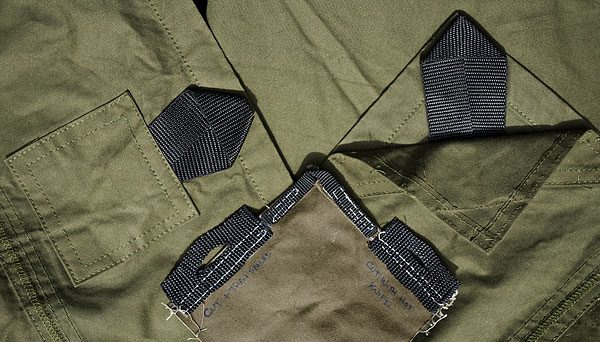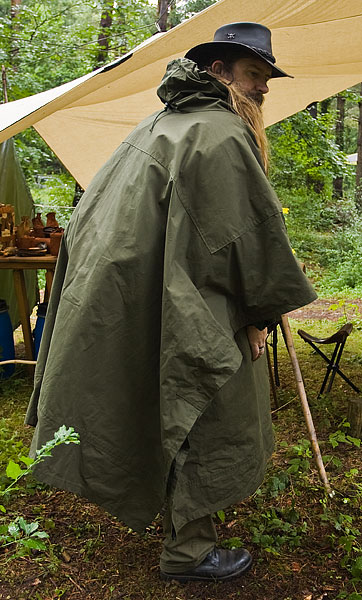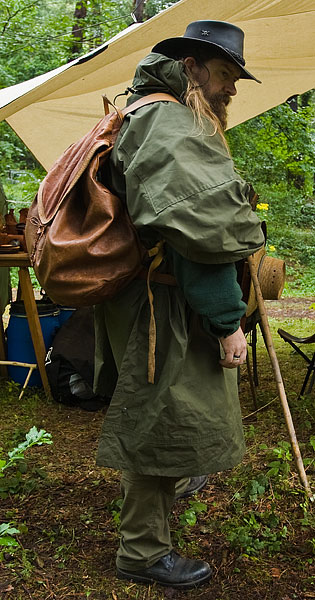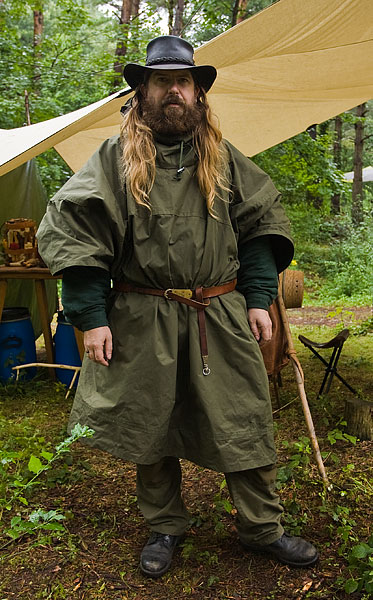Ok, I took the poncho to the moot to give it a try and used it pretty much like I would use my squaddie poncho for a meet up.
Some of the time it was used as a gear cover for my bergen and pack, and here you can see it doing just that with my squaddie poncho, which is very similar in size, being used on the left as an extra fly.
At meet ups this is typical of my most common use for a poncho but not much of a test.
I had intended to use it as my primary shelter on the Mors Kochanski course but in the end we did not need to move camps so that plan fell by the wayside.
I did get to test it out in the rain though and it performed well, as expected, in this task.
I am not a fan of hoods so not the best person to judge, but the hood seemed well made and up to the task as well. ( I suspect I will cut mine off and make it into a high collar with a drawstring instead of trying to roll the darned thing up.)
Here you can see the poncho fastened with the press studs down each side and the length is such that with a good set of gaiters I would consider myself well covered.
The studs are laid out with female fastenings on the front edges and male on the rear, more on this later.
The loops have been repositioned so they no longer hang outside the line of the poncho but they still seem over engineered to me. I suspect they could hold down a marquee in a gale.
I have made up a small patch with some suggested modifications on it. these would make the garment lighter, easier to make and still serve the same function.
Discussing this matter with people at the moot most agreed it would be an improvement with one comment being made that the tapes could be mounted flush with the edge and still be stitched into the inner side of the turned edge. A good suggestion in my opinion.
The tape fixings are made simply by cutting longways with a hot knife and this method is used on the popular Tatonka tarps with good effect.
An interesting suggestion was made by Stuart that buttonhole webbing could be used which gives a pre-made alternative available commercially.
It was also suggested that as this comes on a roll it could be incorporated into the seam along all the edges of the poncho giving a huge number of possible tie off points.
This might be worth looking into depending on the price as it would add to both strength and versatility.
With the stud fastenings connected together there is room for a small pack under the poncho, still giving adequate coverage to the legs at the rear.
The same pack worn over the top can be seen here.
This brings me to another minor modification which could be made.
A second way to wear a poncho is to bring the rear flaps to the front and the front flaps, over them, to the rear. A belt then secures it like so.
This is the method used above with the pack in place.
However, with the press studs laid out as they are, this brings male studs to male studs and female to female.
If the studs were changed on one side so that the male were on the front and the female on the rear the poncho could be studded into this configuration without the need of a belt. A minor modification but a big advantage I'm sure you will agree.
As mentioned I did not get a chance to try it out as a shelter but being much the same size as my squaddie poncho I cannot see any reason it would not perform just as well in this roll.
The feedback I received on site was generally positive with quite a few people showing interest that they had not previously posted.
My own feelings are that this is a piece of equipment that I would make good use of. It is more comfortable in use than nylon, quieter but little heavier.
Being able to open up the whole garment, it is easier to dry than a jacket.
One final consideration, being breathable, unlike a nylon poncho, I would consider wrapping it around my sleeping bag to make a simple bivvi bag on occasions. This is another reason why the change of male / female studs on one side of the poncho would be very useful in my opinion.
Will I buy it? . . . Yes with the given modifications but I will probably want to get rid of the hood for my own use.


 ) After this, depending on demand (they will be made to order), agreeing on a final price (hopefully in the region of what we first envisaged and taking into account inflation and material costs increases) we can look to getting these out to people who want them.
) After this, depending on demand (they will be made to order), agreeing on a final price (hopefully in the region of what we first envisaged and taking into account inflation and material costs increases) we can look to getting these out to people who want them. :twak::AR15firin
:twak::AR15firin